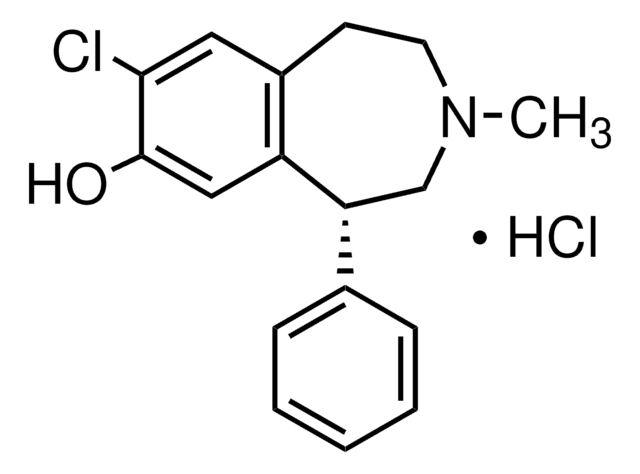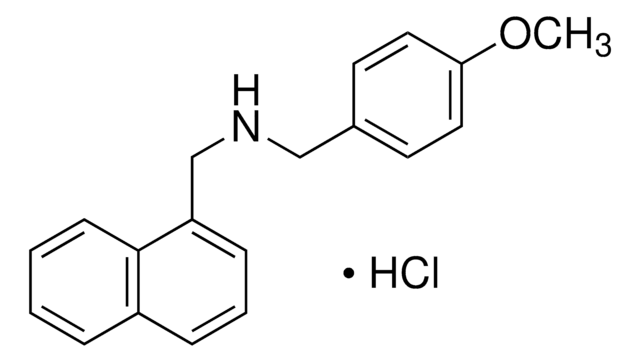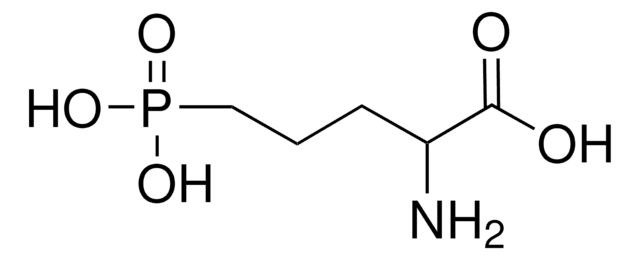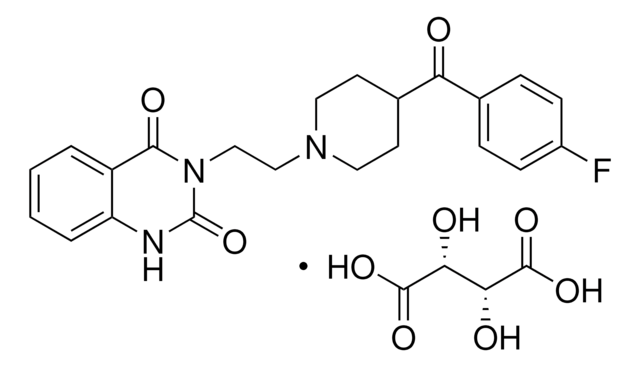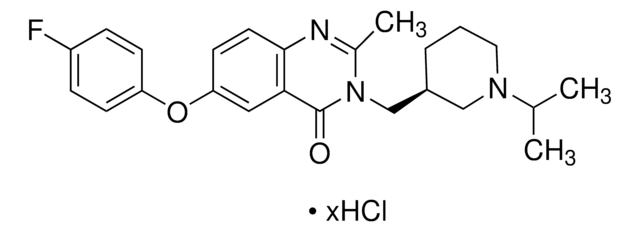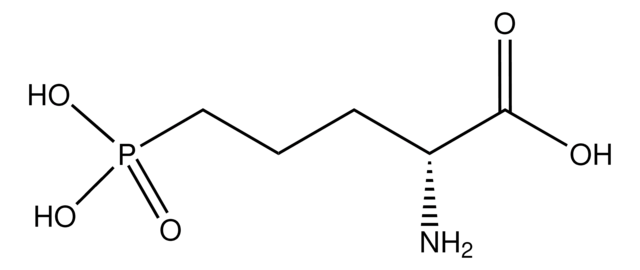T1567
Tertiapin-Q trifluoroacetate salt
≥97% (HPLC)
Synonym(s):
[Gln13]-Tertiapin, Ala-Leu-Cys-Asn-Cys-Asn-Arg-Ile-Ile-Ile-Pro-His-Gln-Cys-Trp-Lys-Lys-Cys-Gly-Lys-Lys-NH2 [Disulfide bridges 3–14, 5–18], TPNQ
Sign Into View Organizational & Contract Pricing
All Photos(1)
About This Item
Empirical Formula (Hill Notation):
C106H175N35O24S4
CAS Number:
Molecular Weight:
2452.00
MDL number:
UNSPSC Code:
12352200
NACRES:
NA.32
Recommended Products
Quality Level
Assay
≥97% (HPLC)
form
lyophilized
storage temp.
−20°C
Gene Information
human ... KCNJ1(3758)
mouse ... KCNJ1(56379)
rat ... KCNJ1(24521)
Amino Acid Sequence
Ala-Leu-Cys-Asn-Cys-Asn-Arg-Ile-Ile-Ile-Pro-His-Gln-Cys-Trp-Lys-Lys-Cys-Gly-Lys-Lys-NH2 [Disulfide bridges 3–14, 5–18]
Biochem/physiol Actions
Blocks the GIRK1/4 and ROMK1 members of the inward-rectifier K+ channel family.
Other Notes
Non-air oxidizable tertiapin derivative.
Lyophilized from 0.1% TFA in H2O
Storage Class Code
11 - Combustible Solids
WGK
WGK 3
Flash Point(F)
Not applicable
Flash Point(C)
Not applicable
Personal Protective Equipment
dust mask type N95 (US), Eyeshields, Gloves
Choose from one of the most recent versions:
Already Own This Product?
Find documentation for the products that you have recently purchased in the Document Library.
Synthesis of a stable form of tertiapin: a high-affinity inhibitor for inward-rectifier K+ channels.
W Jin et al.
Biochemistry, 38(43), 14286-14293 (1999-11-26)
Tertiapin (TPN), a small protein derived from honey bee venom, inhibits the GIRK1/4 and ROMK1 channels with nanomolar affinities. Methionine residue 13 in TPN interacts with residue F148 in the channel, located just outside of the narrow region of the
W Jin et al.
Biochemistry, 38(43), 14294-14301 (1999-11-26)
Tertiapin-Q (TPN(Q)) is a derivative of honey bee toxin tertiapin (TPN) whose methionine residue is replaced with a glutamine residue. TPN(Q) inhibits the ROMK1 and GIRK1/4 inward-rectifier K(+) channels with affinities very similar to TPN. However, unlike native TPN, TPN(Q)
W Jin et al.
Biochemistry, 37(38), 13291-13299 (1998-09-28)
Inward-rectifier K+ channels are a group of highly specialized K+ channels that accomplish a variety of important biological tasks. Inward-rectifier K+ channels differ from voltage-activated K+ channels not only functionally but also structurally. Each of the four subunits of the
Our team of scientists has experience in all areas of research including Life Science, Material Science, Chemical Synthesis, Chromatography, Analytical and many others.
Contact Technical Service